Options – Are they in your attack plan?
Teams who want to develop their attacking game need to have multiple options in their
attack plan.
The complexity of your plan depends on your personnel and the level of the competition
you are playing in. Many years ago the Wallabies ran a simple shape referred to as the
‘Aussie Box’ and it completely changed the way backlines attacked.
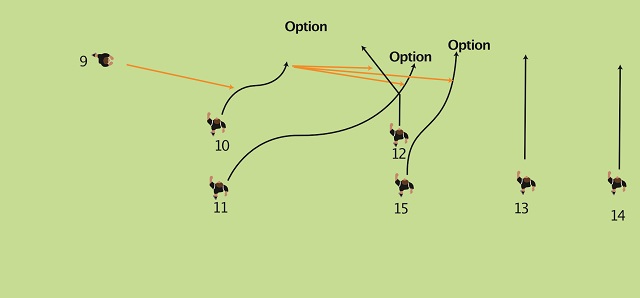
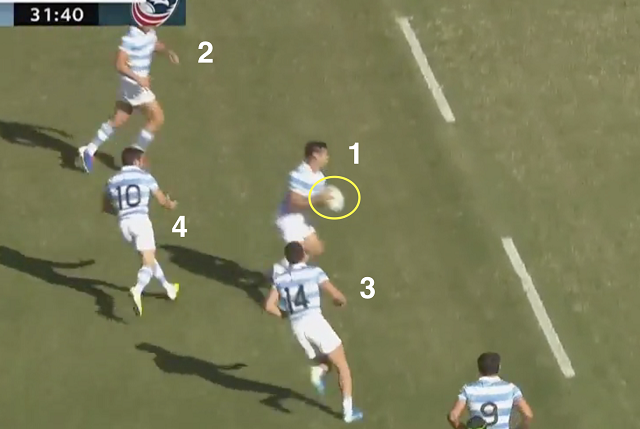
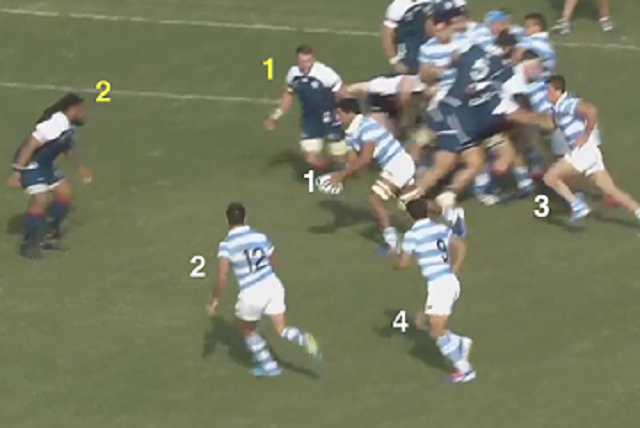
‘Aussie Box’ variations
Since then many sides have gone on to develop similar shapes around their forwards.
Today we see whole team attack shapes as a big part of the modern game. At the highest
level these shapes are not only an orchestrated manoeuvre, they are specifically tailored
to unlock the defence structures of the opposition. This is possible thanks to the
advanced level of analysis used in professional rugby.
Knowledge is power when it comes to designing attacking shapes. But the
unpredictability of the game can also lead to unexpected chances. Opportunities are
limited so it is essential to have an option to allow the attack to exploit them.
No matter what level your team, players need to understand how to work off the ball. It’s
the only way to maintain an attack that can breakdown a solid defensive wall. The ability
to work off the ball provides more time to make better decisions. It positions players
quickly enough to give more options for those making key decisions. The higher the skill
set of the players the greater the ability to run more complex attack shapes with multiple
options.
When every player understands their role and objectives in an attack shape they can
grow their game sense. This gives them the ability to problem solve as the pictures before
them change.
These options are designed to find space. I never use the words ‘decoy’ or ‘dummy’
because these words imply that this player will never get the ball and their role is just to
look interested or run a block on the defence. The running line of a player who will never
get the ball rarely attracts a good defence. Players running block lines focus so much on
taking out a defender they often miss the opportunity to carry into space. To control the
defence all players need to run threatening lines and be in a position to take a pass.
Doing this effectively can create space for the ball carrier, making them the first option.
Multiple options

This image shows a common shape used by many teams. 1. Carry option 2. Inside option
3. Outside option 4. Backdoor option 5. Miss option (would need to be flat).
In the video we see that 5 is a support player in a second line option off 4. This has them
hitting on the edge of the press which has the defence folding hard to cover the openside.
As we zoom out we see the superior numbers on the blind however a little confusion on
the reloading players blocks the ball from getting to the 4 v 2 in the 15m channel.
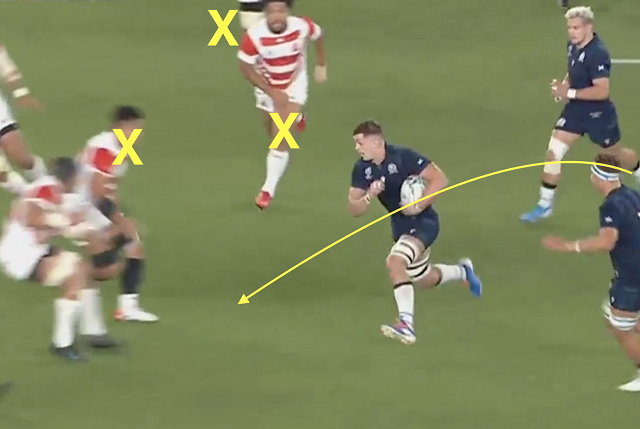
Work off the ball
Here is another formation often seen in all levels of the game. With the ball tucked like this
there is little chance of a the ball being transferred to those players in support. This
removes doubt in the defence and they can fully commit to the tackle.
The video shows there was a plan behind this attack. The ball carrier quickly runs lateral
to engage the wider defenders and shorten the defence line. With quick ball the inside
defenders struggle to fold around in time and the attack can operate with superior
numbers. Unfortunately the attack have not worked hard enough round the corner to get
into a good shape with options and the advantage is lost.
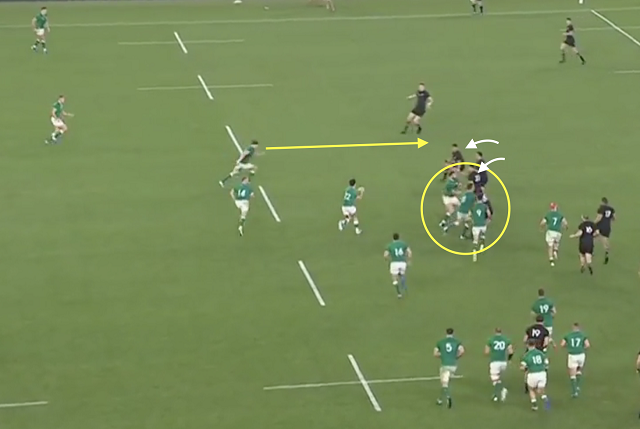
Skills and Understanding
This image shows the highlighted players (white arrows) are trying to stay alive in defence
and maintain their connections with their team mates. The attack players need to run
options down their channels to attract the defenders. The attack must work together, as
one good line can open space for another.
In the video the lines of the attack players do not attract either of the two highlighted
defenders who both push through to upset the attack and put their skills under pressure.
On the first carry the attacker needed to run square and get to the outside of his
opposite. If the defender turned in then the attack takes that space. The second player
running for the crash option also needed to stay square and attack the space outside his
opposite. If his opposite does not see him then he keeps his line and takes the ball into
space.
As with any skill in rugby these shapes need to be introduced in a progression that initially
covers understanding, building to an intensity governed by time and space before moving
into a randomised, match like situation.
The Rugby Site has some great advice in a section of videos by Sir Graham Henry
Check out more posts from Dave












.jpg)

.jpg)







